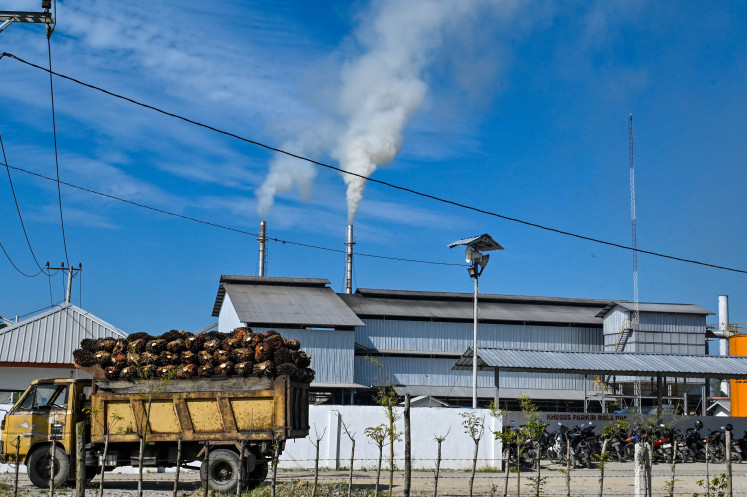Popular Reads
Top Results
Can't find what you're looking for?
View all search resultsPopular Reads
Top Results
Can't find what you're looking for?
View all search resultsAsia Pacific Rayon to export half of viscose production
Asia Pacific Rayon (APR), an affiliate of major Asian pulp and paper producer Asia Pacific Resources International Holdings, plans to export half of its viscose output to meet growing global demand for environmentally friendly basic material for the production of textiles
Change text size
Gift Premium Articles
to Anyone
A
sia Pacific Rayon (APR), an affiliate of major Asian pulp and paper producer Asia Pacific Resources International Holdings, plans to export half of its viscose output to meet growing global demand for environmentally friendly basic material for the production of textiles.
The company’s plant located in Pangkalan Kerinci, Riau, which began commercial operation in March, produces viscose with a capacity of 240,000 tons a year.
APR director Basrie Kamba said in Jakarta on Monday that the company invested about Rp 10.9 trillion (US$765 million) for the construction of the viscose plant and supporting facilities. “We hope the factory can officially be inaugurated soon with the presence of [President Joko “Jokowi” Widodo],” he told The Jakarta Post.
The world market of viscose is still small compared to that of cotton and polyester, as consumers are still unaware of its advantages. “But we are quite optimistic that the market, especially at home, will continue to grow, as the fashion industry seeks more environmentally friendly materials for garments,” he said.
“If we compare it to cotton, viscose is more competitive. It is more expensive than polyester, but its comfort exceeds that of both of its competitors,” Basrie said.
Apart from its comfort and price, he claimed that the material sponged up more water and absorbed more color during its production than other materials, making it useful for various types of clothing. He also pointed out that viscose-rayon was environmentally friendly, as it was usually plant-based, unlike its counterpart polyester, which is widely blamed for micro plastic pollution.
The viscose produced by APR, which is Indonesia’s largest integrated rayon factory, is derived from the ‘cellulose’ or wood pulp of fast-growing trees, such as acacia. The cellulose material is then dissolved in a chemical solution to produce a pulpy viscous substance, which is spun into fiber that can then be turned into threads.
To put the material into the spotlight, Basrie had worked with fashion designers to showcase the viscose fabric in fashion shows and events, including the upcoming Muslim Festival from May 1 to 4. Globally, the “Challenge the Fabric” award scheme had a similar aim to showcase viscose-made designer clothing at the 2018 London Fashion Week.
“But the public is not yet aware of the fabric’s [benefits]. We usually get complaints from the textile industry that they can rarely find the material in the market. Even if they do, they struggle to repeat their orders,” Basrie said.
He said he hoped APR’s operation would give local textile producers a sustainable supply for rayon. Basrie also expressed hope that his teamwork with fashion designers would create enough demand for viscose-rayon amid the lack of awareness about the material, creating an “immense potential” within the thriving sector.
Meanwhile, the chairman of the Association of Indonesian Textile Producers (API), Ade Sudrajat, said the textile fiber market in Indonesia was still dominated by polyester, which was still widely used as the main raw material for the production of yarn.
Ade said the viscose producers in the country needed to increase public awareness about the advantages of wearing fabric made from viscose and further refine the material to increase its market.
On top of that, polyester also now exists in “breathable” versions, he claimed, strengthening its competitive advantage over other materials. To compete with it, he advised rayon producers to expand the material’s functionality, such as using its water-absorbing quality for hygiene products or improving its material to make it crease-free.
A study by economic surveyor Fiber Organon estimates that synthetic fibers will have a consistent average compound annual growth rate of 4.4 percent between 2015 and 2025 in the world market, while viscose fabric will drop in demand from 7.7 to 4.9 percent within the same time frame.










